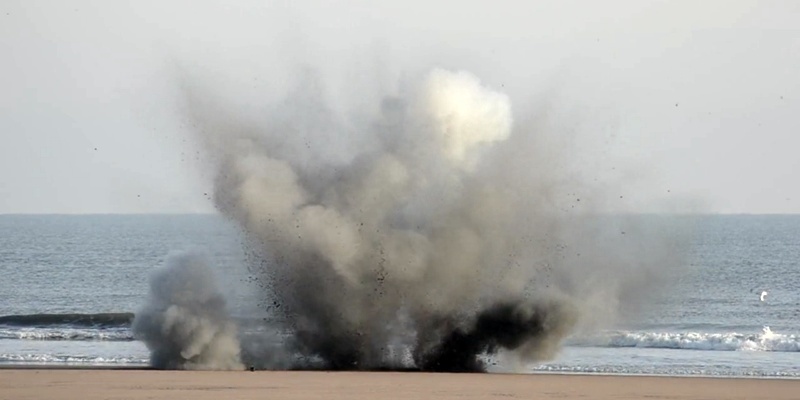The commanding officer of Scotland’s bomb disposal unit has blamed recent storms for a surge in devices being washed up in Tayside and Fife.
Reports of unusual items on the coastline, from Montrose in Angus to Tentsmuir in Fife, have been flooding in over the past couple of weeks.
While some of these objects have been as innocuous as an upturned pot, others have turned out to be ‘live’ and have required the attendance of Royal Navy Explosive Ordnance Disposal (EOD) teams.
Lieutenant Commander Kevin Stockton of the Northern Diving Group, which deals with incidents across the country, said the storms that lashed the area at the start of the month had caused the sudden increase in alerts.
He said: ”The recent weather which has battered Scotland has meant especially bad sea conditions and that has led to a lot of sand movement beneath the waves. This, in turn, leads to these devices washing up on the beach and being found by walkers.
”It seems there has also been more people out and about on the beaches, which has meant more people spotting these items, so, consequently, we are getting more reports of ordnance appearances.”
Practice bombing missions were carried out right around the British coast during the Second World War.
At the weekend, staff from HM Coastguard Montrose Sector alerted an EOD team to objects found on the town’s beach at about 9.30am on Sunday. This call-out came after another shout last week, when officers destroyed a suspect device on the same stretch of coastline. It turned out to be an old smoke flare used by shipping firms.
A series of incidents have also been attended at Tentsmuir Forest near Tayport, which is a popular beauty spot with families and dog walkers. Scottish Natural Heritage, which runs the nature reserve, is considering the introduction of warning signs at the site, after three mortar shells were discovered within the last three months.
Although the explosives cannot be set off by a person walking over them, members of the public have been urged not to touch or approach anything that looks suspicious.
In 1997 a Ministry of Defence investigation turned up 3,520 bombs in a sweep of Lunan Bay, between Arbroath and Montrose, 420 of which were live devices.
Using controlled explosions, the experts safely disposed of the devices, many of which were missing sections such as tail fins, while others had been well preserved and were still bearing paint markings.
At that time it was the responsibility of 33 Engineer Regiment to make the area safe, assisted by a team of 30 civilian searchers, using sensitive location equipment.
Running from River Lunan down to Corbie Knowe, most of the objects which were found were 10lb practice bombs which were dropped by the RAF when the area was used as a range.
A third of the devices which were found were located in the same 50-metre section which was testimony to the accuracy of the bomber pilots.See video of the Montrose detonation on the HM Coastguard Montrose Sector Facebook page
